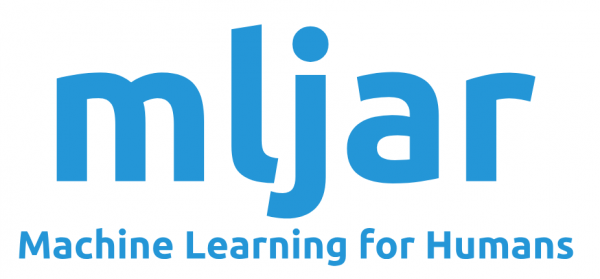
MLJAR is an open-source AutoML tool that offers hyperparameter optimization, feature engineering, and model training for both supervised and unsupervised machine learning tasks. The tool is designed to automate the tedious and time-consuming aspects of building machine learning models, allowing data scientists to focus on the most important aspects of their work.
One of the key features of MLJAR is its hyperparameter optimization engine. Hyperparameters are the parameters that define the structure of a machine learning model, such as the number of hidden layers in a neural network or the learning rate of a gradient descent algorithm. Finding the optimal hyperparameters for a given model can be a challenging task that requires a lot of trial and error. MLJAR uses advanced optimization algorithms such as Bayesian optimization and evolutionary algorithms to find the best set of hyperparameters for a given task.
Another key feature of MLJAR is its automated feature engineering capabilities. Feature engineering is the process of selecting and transforming the input data to create new features that are more informative for the machine learning model. This can be a time-consuming process that requires domain expertise and a deep understanding of the data. MLJAR automates the feature engineering process by using a variety of techniques such as feature selection, feature scaling, and feature transformation to create a set of features that are optimized for the given task.
MLJAR supports a wide range of supervised and unsupervised machine learning tasks, including classification, regression, clustering, and anomaly detection. The tool also supports a variety of popular machine learning algorithms, including decision trees, random forests, gradient boosting, and neural networks. Users can select the algorithm that best suits their needs and then use MLJAR to optimize the hyperparameters and perform feature engineering.
MLJAR also provides a variety of visualization and reporting tools to help users understand and interpret the results of their machine learning experiments. Users can view detailed reports that show the performance of each model on the test data and compare the results of different experiments. The tool also provides visualizations of the feature importance and feature correlations, making it easy to identify the most important features for a given task.
Uses
Here are some real-life uses for MLJAR:
1- Fraud Detection: MLJAR can be used to build machine learning models that can detect fraudulent activities. With the help of the platform's automated feature engineering capabilities, data scientists can easily extract and analyze large datasets to identify patterns and anomalies that could indicate fraudulent activities.
2- Customer Churn Prediction: MLJAR can be used to build predictive models that can identify customers who are likely to churn. By analyzing customer data such as their purchasing history, transaction records, and demographic information, the platform can create models that can predict customer behavior and recommend strategies to retain customers.
3- Marketing Campaign Optimization: MLJAR can be used to build models that can optimize marketing campaigns by predicting the most effective channels and messages to reach customers. By analyzing customer data and identifying patterns in behavior, the platform can recommend the best strategies to reach and engage with customers.
4- Predictive Maintenance: MLJAR can be used to build models that can predict when equipment is likely to fail. By analyzing sensor data and other operational data, the platform can create models that can detect anomalies and recommend maintenance actions before equipment failure occurs.
5- Medical Diagnosis: MLJAR can be used to build models that can assist doctors in diagnosing medical conditions. By analyzing patient data such as medical history, symptoms, and test results, the platform can create models that can predict the likelihood of different medical conditions and recommend treatment options.
These are just a few examples of the many real-life uses for MLJAR. The platform's flexibility and ease of use make it a valuable tool for data scientists and developers looking to build and deploy machine learning models quickly and efficiently.
Code Example
Here is an example Python code for using MLJAR's AutoML feature to train a machine learning model:
First install mljar-supervised: !pip install mljar-supervised
import pandas as pd
from sklearn.model_selection import train_test_split
from supervised.automl import AutoML
# load dataset
df = pd.read_csv('https://raw.githubusercontent.com/mljar/mljar-examples/master/datasets/titanic.csv')
# split into train and test sets
X_train, X_test, y_train, y_test = train_test_split(df.drop('Survived', axis=1),
df['Survived'],
test_size=0.2,
random_state=42)
# initialize AutoML
automl = AutoML(mode='Perform', total_time_limit=120, algorithms=["Xgboost", "LightGBM", "Random Forest"],
validation_strategy={"validation_type": "kfold", "k_folds": 5, "shuffle": True, "stratify": True})
# fit the model
automl.fit(X_train, y_train)
# predict on test set
predictions = automl.predict(X_test)
# evaluate the model
score = automl.score(X_test, y_test)
print("Model score: ", score)
In this example, we load the Titanic dataset, split it into training and testing sets, and initialize the AutoML model with a total time limit of 120 seconds and three algorithms: XGBoost, LightGBM, and Random Forest. We then fit the model on the training data and predict on the test set. Finally, we evaluate the model's performance using the score function and print the result.
Note that MLJAR's AutoML feature also provides the option to tune hyperparameters and feature selection, and can handle various data types, such as numerical, categorical, and text data.
Conclusion
In summary, MLJAR is an open-source AutoML tool that offers hyperparameter optimization, feature engineering, and model training for a wide range of supervised and unsupervised machine learning tasks. The tool is designed to automate the tedious and time-consuming aspects of building machine learning models, allowing data scientists to focus on the most important aspects of their work. With its advanced optimization algorithms and automated feature engineering capabilities, MLJAR is a powerful tool for anyone looking to build high-performance machine learning models with minimal effort.